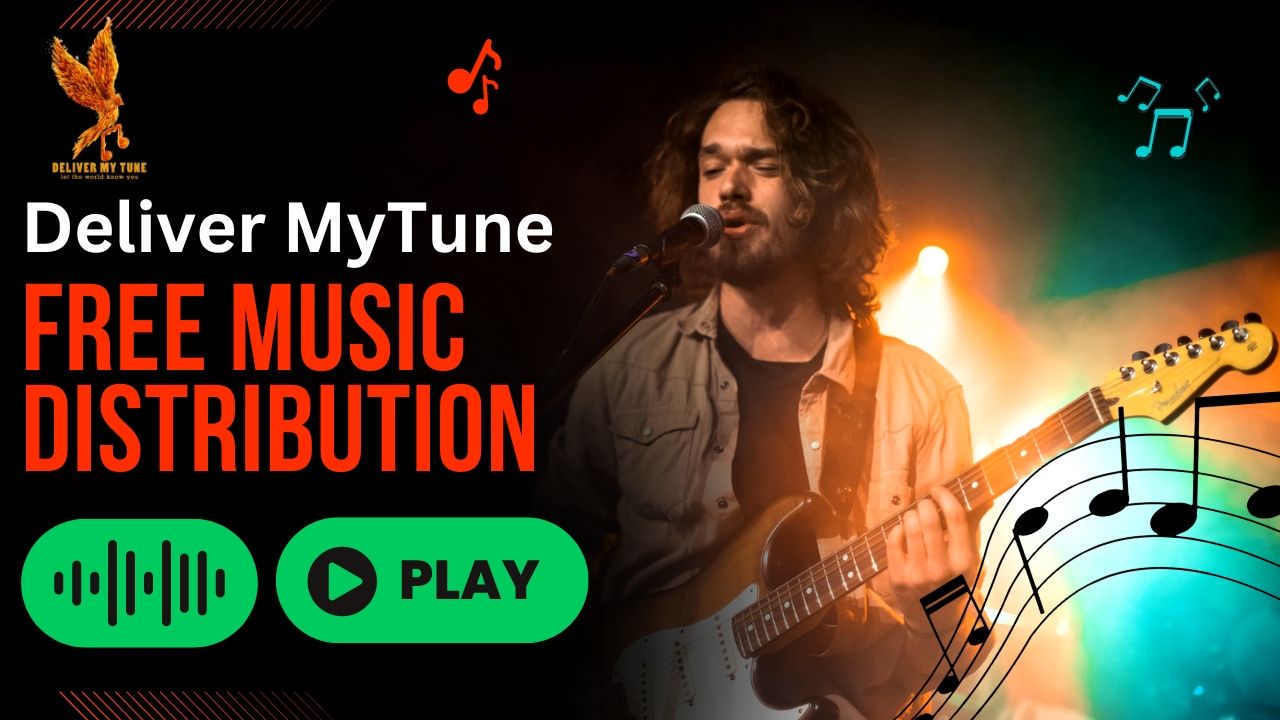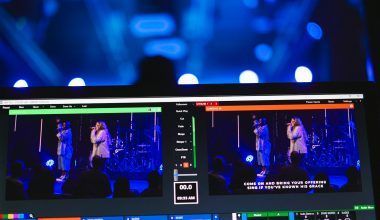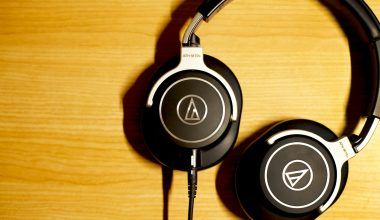For independent artists, free music distribution has become a game-changer. Gone are the days when you needed to sign deals with record labels or spend hefty amounts to get your music out into the world. With digital platforms at their peak and music streaming booming, artists can now distribute their tracks globally without paying upfront fees. Platforms like Spotify, Apple Music, and YouTube Music have opened the door for musicians to reach millions of listeners from all corners of the globe, making music distribution easier and more affordable than ever before.
This blog will explore the benefits of free music distribution, provide a step-by-step guide on how to get started, and discuss the best platforms available in 2024. Whether you’re a budding musician or an experienced artist looking to expand your reach, free distribution offers the perfect solution to kickstart your career.
What is Free Music Distribution?
In simple terms, free music distribution allows artists to upload and share their music across major streaming platforms without paying any fees. These platforms act as intermediaries, distributing your tracks to services like Spotify, Apple Music, Amazon Music, and YouTube. Traditionally, artists would either have to rely on record labels or pay third-party services to release their music. Now, with free distribution services, any artist can upload their music and reach a global audience without financial barriers.
Most of these services offer basic distribution features for free, with optional upgrades for additional benefits like faster release times, higher royalty percentages, or premium promotional tools. This makes it easy for emerging artists to experiment, test the market, and share their music without taking on financial risk.
Why is Free Music Distribution Important for Artists?
The importance of free music distribution cannot be overstated, especially for independent musicians trying to break into the industry. Here are some key reasons why opting for free distribution could be your best move:
- Accessibility for All: Whether you’re just starting or have been producing music for years, free music distribution levels the playing field. Artists can get their music on major platforms without worrying about upfront costs. This is essential for those working with limited budgets, allowing them to focus on producing quality music rather than spending on distribution.
- Global Exposure: Free distribution opens the doors to a worldwide audience. Platforms like Spotify, Apple Music, and YouTube are accessible from almost any country, allowing your music to reach listeners far and wide. Imagine having your music played in regions you’ve never even visited!
- Monetization Opportunities: Although the service is free, artists can still earn from their music through streaming royalties, sync licensing, and downloads. Streaming platforms pay artists per stream, and while the payouts may seem small, they can add up over time, especially as your fanbase grows.
- No Commitment Required: Many free platforms don’t lock artists into long-term contracts, giving them the freedom to distribute their music as they see fit. Artists can experiment with different sounds, release multiple tracks, or even remove their music from platforms without any penalties.
- Learning the Industry: For emerging artists, using free distribution platforms can be a learning experience. You gain insight into how the music industry works, how to promote your music, and how to manage your brand. It’s a great way to test the waters before moving onto paid services or signing a record deal.
Top Free Music Distribution Platforms of 2024
While there are plenty of distribution platforms available, choosing the right one depends on your needs. Below, we’ve outlined the best platforms for free music distribution in 2024, along with their features and benefits:
1. Amuse
Amuse has rapidly become one of the most popular free music distribution platforms, especially for independent artists. It stands out for its simplicity and mobile-first approach, allowing users to distribute music directly from their phones.
- Key Features: Free distribution to major platforms like Spotify, Apple Music, Amazon Music, and more. Artists retain 100% of their royalties and rights.
- Pros: Easy-to-use mobile app, artists keep all their royalties.
- Cons: Limited customer support, and premium features require a paid upgrade.
2. Soundrop
If you plan to release cover songs or remixes, Soundrop is one of the best free options available. They handle the legal complexities of releasing cover songs by helping artists with licensing.
- Key Features: Distribute cover songs legally, sync licensing for platforms like YouTube, and free distribution to streaming platforms.
- Pros: Great for cover songs, offers sync licensing.
- Cons: Takes a small portion of royalties (15%), compared to platforms that offer 100% to artists.
3. UnitedMasters
Designed to empower artists to control their music and its distribution, UnitedMasters offers both free and premium services. The platform also helps artists get sync placements for their music in commercials, movies, and TV shows.
- Key Features: Free distribution, premium sync licensing opportunities, artists keep 90% of their royalties.
- Pros: Sync licensing options, large platform with great opportunities for growth.
- Cons: Takes 10% of royalties in the free plan.
4. Routenote
Routenote offers a unique mix of free and paid distribution services. While you can choose to distribute your music for free, the platform also provides premium plans for faster delivery and higher royalty payouts.
- Key Features: Free distribution, 85% royalties to the artist, optional premium upgrades.
- Pros: Flexible plans, perfect for artists of all levels.
- Cons: Lower royalty percentage on the free plan (85%).
5. Audiomack
Although Audiomack is known as a music streaming platform, it also allows artists to distribute their tracks to major platforms like Spotify and Apple Music. It’s an excellent choice for hip-hop, rap, and R&B artists, thanks to its focus on these genres.
- Key Features: Free uploads to Audiomack, free distribution to major platforms, artist-friendly tools for promotion.
- Pros: Strong community for hip-hop and rap artists, easy to use.
- Cons: Focuses on specific genres, so not ideal for all artists.
How to Get Started with Free Music Distribution
Getting started with free music distribution is easier than ever. Follow these simple steps to distribute your music globally:
Step 1: Choose the Right Platform
The first step is deciding which distribution platform best fits your needs. If you’re looking for simplicity and mobility, Amuse is a solid choice. If you want legal assistance with cover songs, Soundrop is the platform for you.
Step 2: Prepare Your Music for Release
Before submitting your music, make sure it’s professionally mixed and mastered. Distribution platforms require high-quality audio files (typically in WAV or FLAC formats). Also, ensure you have the appropriate metadata (song titles, album name, artist credits) and album art (usually 3000×3000 pixels in JPEG or PNG format).
Step 3: Create Your Account and Upload Your Music
Once you’ve chosen a platform, create an account. Most platforms will ask for basic details like your artist name, genre, and release title. After that, you can upload your music files, fill in the metadata, and upload your album artwork.
Step 4: Promote Your Release
Distribution is just the beginning! Once your music is live on streaming platforms, promote it on your social media channels, share it with your mailing list, and submit it to playlists for maximum exposure.
Maximizing Earnings from Free Music Distribution
Even with free music distribution, there are multiple ways to earn from your music:
1. Streaming Royalties
Every time someone streams your song on platforms like Spotify or Apple Music, you earn a small royalty. The more your song is played, the more money you make. Even though the payout per stream may seem low, it can add up over time as your music gains traction.
2. Digital Downloads
While streaming has become the dominant form of music consumption, platforms like iTunes still allow fans to purchase and download music. For every download, you earn a percentage of the sale.
3. Sync Licensing
Sync licensing allows your music to be used in films, TV shows, commercials, and video games. Some distribution platforms, like UnitedMasters, offer sync licensing opportunities, helping artists earn significant income through music placements.
4. Merchandise Sales
Once your music is live on streaming platforms, you can drive traffic to your personal website or online store to sell merchandise. Whether it’s branded T-shirts, hats, or vinyl records, selling merchandise is a great way to monetize your music and create a stronger connection with your fans.
Promoting Your Music: Best Practices
Releasing your music is just the first step. Promotion is critical if you want to increase your streams and reach a wider audience. Here are some strategies for promoting your music after distribution:
Leverage platforms like Instagram, TikTok, and YouTube to create a buzz around your release. Regularly post behind-the-scenes content, teasers, and stories to keep your followers engaged and excited for your music.
2. Email Marketing
Build an email list of your fans and use it to send updates about new releases, upcoming performances, or exclusive content. Email marketing is a direct way to keep your most loyal fans engaged and drive them to your streaming platforms on release day.
3. Submit to Playlists
Playlists are one of the most effective ways to get your music discovered by new listeners. Platforms like Spotify for Artists allow you to submit your music for playlist consideration, which can significantly boost your streams and visibility.
4. Collaborate with Other Artists
Collaborations can help you reach new audiences by tapping into the fanbases of other artists. Whether it’s through a featured verse or a joint release, working with other musicians can increase your exposure.
5. Music Videos
Creating a visual component for your music can make it more memorable and shareable. You don’t need a massive budget to create engaging music videos. Even a simple lyric video can add value and attract more listeners.
Common Mistakes to Avoid in Free Music Distribution
While free music distribution is a fantastic option, there are some common mistakes that artists should avoid:
- Poor Quality Audio: Always ensure your tracks are professionally mixed and mastered before distributing. Low-quality audio can lead to bad reviews and lost opportunities.
- Incorrect Metadata: Make sure all your song titles, artist credits, and album information are accurate. Incorrect metadata can result in delays or even removal from streaming platforms.
- Neglecting Promotion: Don’t rely solely on distribution to bring in listeners. Without a proper promotional plan, your music may get lost in the sea of content on streaming platforms.
- Ignoring Analytics: Most distribution platforms offer analytics tools that provide insights into how your music is performing. Use these tools to understand your audience and refine your promotional strategies.
Conclusion
Free music distribution is a revolutionary tool for independent artists, allowing you to reach global audiences without spending a dime. Platforms like Amuse, Soundrop, and UnitedMasters make it possible for anyone with a passion for music to share their work with the world. By choosing the right platform, preparing your music, and promoting it effectively, you can grow your fanbase, earn royalties, and potentially turn your passion into a full-time career.
Remember, free music distribution isn’t just about uploading tracks – it’s about learning the industry, engaging with fans, and continuously improving. So take advantage of these platforms, start sharing your music today, and watch your audience grow!
Related Articles:
For further reading, explore these related articles:
- How to Become a Successful Music Artist in India in 2024?
- Promo Cards on Spotify: A Game Changer for Artists
For additional resources on music marketing and distribution, visit Deliver My Tune.






